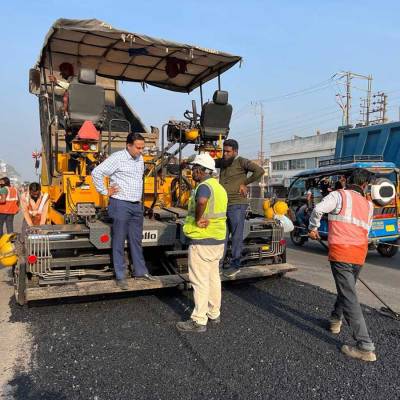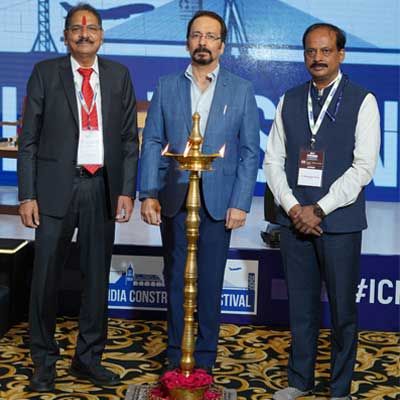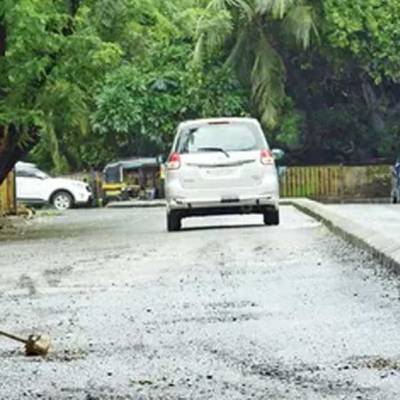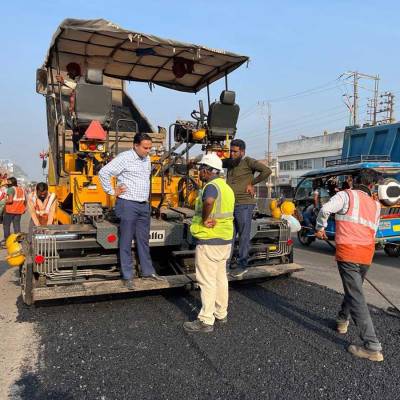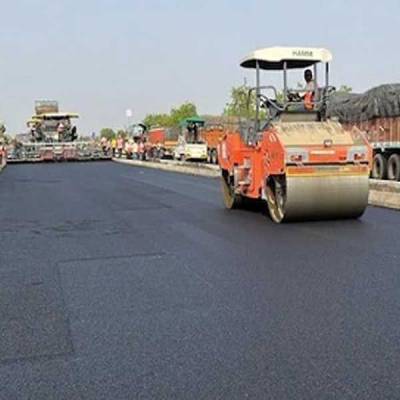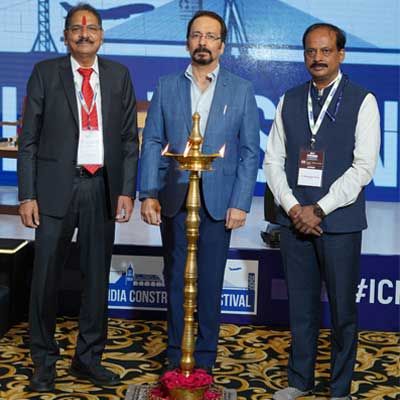- Home
- Technology
- Say NO To Potholes
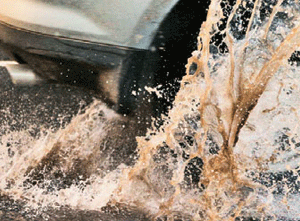
Say NO To Potholes
According to the Central Road Research Institute (CRRI) data, Delhi and Mumbai record highest number of potholes in India. Consider this: Brihanmumbai Municipal Corporation (BMC) spent a whooping Rs 57 crore last year on repairing potholes. Whats more, this year the city has called for an allocation of Rs 28 crore. As per a service provider handling BMC´s Voiceofcitizen portal a high-tech pothole-tracking system 3,800 potholes in Mumbai have been reported till date of which 3,000 potholes have been closed. This number, though huge, has not yet surpassed the 2013 record of 38,000 potholes. That said, addressing the problem of potholes on Indian roads seems to be a never-ending saga, owing to which increasing traffic snarls along with road accidents continue to be an integral part of metro cities.
So, where does the problem lie?
Dr PK Jain, HOD Chief Scientist, CRRI, says, ´It is the populated cities that face such problems. However, the situation has certainly improved as compared to last year with new technologies being implemented by city corporations.´
What´s in use!
In Mumbai, cold mix pot hole repair technology, supplied by companies including Wonder Patch, Hindustan Colas Ltd and Shaunak Infrastructure, is used to repair potholes. However, Delhi majorly uses hot mix technology - Infrared hot mix recycling - whereas cold mix technology is used when in need of a quick fix. While Delhi ranks among the leading cities with the highest number of potholes, an official from PWD, Delhi, claims, ´We actively undertake road repair works and hence, not many complaints are registered for potholes. But, there are complaints regarding patchwork; potholes is a result of an unattended patchwork.´
Adding to what is already in use, CW details a few existing and potential road repairing technologies that can act as a quick and effective remedy to repair the many existing potholes.
In conclusion
These techniques seem to have been tried and tested with solutions to potholes, with selected ones under sampling.
Lack of technology or lack of will-power, what seems to keep the Government from providing good road infrastructure, still remains a question?
PatchFill-Pothole Repair Machine
Designed by the Central Road Research Institute (CRRI) this machine is exclusively designed to prepare cold mix batches for immediate patching without holding the traffic for long. The machine utilises Pneumatic Compressor system for its working. Launched in December 2013, the machine costs Rs 10 lakh.
Cost: Rs 5,000 for filling up 100 potholes (30 cm dia and 6 cm depth).
Durability: 5-10 years Inputs by the Central Road Research Institute (CRRI)
Ready in 3 minutes
Road Block
This is a cold mix technology, also available in hot mix, that can be instantly applied to fill potholes.
Cost: Hot mix: Rs 6 per kg; Cold mix: Rs 12-13 per kg 1 sq m of pothole requires approximately 100 kg of cold mix, which costs Rs 1,000. Whereas the same amount of hot mix will cost Rs 400-500 per sq m. However, the later is not a preferred choice during monsoons.
Durability: Five years minimum Inputs by TK Subhash, Chief Manager Technical, Hindustan Colas
Ready in 30 minutes
Tikitar Technology This pothole repairing solution, Tiki Ezrepair, is under sampling with BMC. It is a bituminous solution, which is mixed on-site with the aggregate.
Cost: About Rs 100 per kg. Of this, only 5 per cent of the solution is used in 100 kg of aggregate.
Durability: One year Inputs by Hardik Shah, Director, Tikitar Industries Pvt Ltd
Ready in 3 minutes
Wonder Patch
This chemical does not allow water to decompose the bitumen, further preventing potholes to reoccur.
Procedure:
Cost: Three to four times more than the basic bitumen mixture used. Durability: Four to five years Inputs by Anil Godbole, Manufacturer, Wonder Patch
Ready in 15-20 minutes
Recycle Paper Mill Waste (RPMW)
This is comparatively a low cost and easy-to-use pothole repairing technology. It is a temporary solution and can last for a few months. Presently in the sampling stage, RPMW was used in Daund-Baramati road (perpendicular to Pune-Solapur highway). On an average, 100 loaded vehicles (trucks/buses) per hour and nearly 200 two-wheelers pass the highway daily.
Procedure:
Cost: Includes overhead charges and cement cost. Recycle paper mill waste is freely available.
Durability: The highway is intact even after five months post the sampling. Inputs by Sachin Mandavgane, PhD, Department of Chemical Engineering, Visvesvaraya National Institute of Technology, Nagpur
Ready in 5 minutes
According to the Central Road Research Institute (CRRI) data, Delhi and Mumbai record highest number of potholes in India.
Consider this: Brihanmumbai Municipal Corporation (BMC) spent a whooping Rs 57 crore last year on repairing potholes. Whats more, this year the city has called for an allocation of Rs 28 crore. As per a service provider handling BMC´s Voiceofcitizen portal a high-tech pothole-tracking system - 3,800 potholes in Mumbai have been reported till date of which 3,000 potholes have been closed. This number, though huge, has not yet surpassed the 2013 record of 38,000 potholes. That said, addressing the problem of potholes on Indian roads seems to be a never-ending saga, owing to which increasing traffic snarls along with road accidents continue to be an integral part of metro cities.
So, where does the problem lie?
Dr PK Jain, HOD Chief Scientist, CRRI, says, ´It is the populated cities that face such problems. However, the situation has certainly improved as compared to last year with new technologies being implemented by city corporations.´
What´s in use!
In Mumbai, cold mix pot hole repair technology, supplied by companies including Wonder Patch, Hindustan Colas Ltd and Shaunak Infrastructure, is used to repair potholes. However, Delhi majorly uses hot mix technology - Infrared hot mix recycling - whereas cold mix technology is used when in need of a quick fix. While Delhi ranks among the leading cities with the highest number of potholes, an official from PWD, Delhi, claims, ´We actively undertake road repair works and hence, not many complaints are registered for potholes. But, there are complaints regarding patchwork; potholes is a result of an unattended patchwork.´
Adding to what is already in use, CW details a few existing and potential road repairing technologies that can act as a quick and effective remedy to repair the many existing potholes.
In conclusion
These techniques seem to have been tried and tested with solutions to potholes, with selected ones under sampling.
Lack of technology or lack of will-power, what seems to keep the Government from providing good road infrastructure, still remains a question?
- CRRI
- BMC
- BMC
- RPMW
- PWD ,Voiceofcitizen Portal
- Roads
- Metro
- Dr Pk Jain
- Repair Technology,Wonder Patch
- Hindustan Colas Ltd
- Shaunak Infrastructure
- Delhi
- Patchwork
- Patchfill-Pothole
- Road Block
- Roadbond Material
- Tk Subhash
- Tiki Ezrepair Solution
- Tikitar Industries Pvt Ltd
- Hardik Shah
- Anil Godbole
- Visvesvaraya National Institute Of Technology
Crores of rupees are spent on better roads across the country; however, the current condition of road abuse still continues. CW explores solutions to this never-ending menace. According to the Central Road Research Institute (CRRI) data, Delhi and Mumbai record highest number of potholes in India. Consider this: Brihanmumbai Municipal Corporation (BMC) spent a whooping Rs 57 crore last year on repairing potholes. Whats more, this year the city has called for an allocation of Rs 28 crore. As per a service provider handling BMC´s Voiceofcitizen portal a high-tech pothole-tracking system 3,800 potholes in Mumbai have been reported till date of which 3,000 potholes have been closed. This number, though huge, has not yet surpassed the 2013 record of 38,000 potholes. That said, addressing the problem of potholes on Indian roads seems to be a never-ending saga, owing to which increasing traffic snarls along with road accidents continue to be an integral part of metro cities. So, where does the problem lie? Dr PK Jain, HOD Chief Scientist, CRRI, says, ´It is the populated cities that face such problems. However, the situation has certainly improved as compared to last year with new technologies being implemented by city corporations.´ What´s in use! In Mumbai, cold mix pot hole repair technology, supplied by companies including Wonder Patch, Hindustan Colas Ltd and Shaunak Infrastructure, is used to repair potholes. However, Delhi majorly uses hot mix technology - Infrared hot mix recycling - whereas cold mix technology is used when in need of a quick fix. While Delhi ranks among the leading cities with the highest number of potholes, an official from PWD, Delhi, claims, ´We actively undertake road repair works and hence, not many complaints are registered for potholes. But, there are complaints regarding patchwork; potholes is a result of an unattended patchwork.´ Adding to what is already in use, CW details a few existing and potential road repairing technologies that can act as a quick and effective remedy to repair the many existing potholes. In conclusion These techniques seem to have been tried and tested with solutions to potholes, with selected ones under sampling. Lack of technology or lack of will-power, what seems to keep the Government from providing good road infrastructure, still remains a question? PatchFill-Pothole Repair Machine Designed by the Central Road Research Institute (CRRI) this machine is exclusively designed to prepare cold mix batches for immediate patching without holding the traffic for long. The machine utilises Pneumatic Compressor system for its working. Launched in December 2013, the machine costs Rs 10 lakh. Procedure: Charge aggregate in the respective bins. Fill up the emulsion and water tanks. Clean the pothole of all loose materials and dust using a jet of air. Before placing mix, apply tack coat of bitumen emulsion using spraying pipe. Select the mix recipe through a control panel. Post mixing, discharge the mixture using discharge button. Fill the pothole manually and compact it using plate vibrator. Cost: Rs 5,000 for filling up 100 potholes (30 cm dia and 6 cm depth). Durability: 5-10 years Inputs by the Central Road Research Institute (CRRI) Ready in 3 minutes Road Block This is a cold mix technology, also available in hot mix, that can be instantly applied to fill potholes. Potholes are shaped square and tack coat (0.5 kg/ 10 sq m) with emulsion. The pothole is then filled with the Roadbond material up to a level slightly higher than the adjoining road surface. Sand dust or rock dust is sprayed and it is compacted with a hand hammer or roller. Open to traffic in 30 minutes. Cost: Hot mix: Rs 6 per kg; Cold mix: Rs 12-13 per kg 1 sq m of pothole requires approximately 100 kg of cold mix, which costs Rs 1,000. Whereas the same amount of hot mix will cost Rs 400-500 per sq m. However, the later is not a preferred choice during monsoons. Durability: Five years minimum Inputs by TK Subhash, Chief Manager Technical, Hindustan Colas Ready in 30 minutesTikitar Technology This pothole repairing solution, Tiki Ezrepair, is under sampling with BMC. It is a bituminous solution, which is mixed on-site with the aggregate. Loose materials are cleaned from the pothole. The bituminous tiki ezrepair solution is primed. The aggregate is added and another layer of bituminous tiki ezrepair solution is sprayed. The road is compacted with a roller. Cost: About Rs 100 per kg. Of this, only 5 per cent of the solution is used in 100 kg of aggregate. Durability: One year Inputs by Hardik Shah, Director, Tikitar Industries Pvt Ltd Ready in 3 minutes Wonder Patch This chemical does not allow water to decompose the bitumen, further preventing potholes to reoccur. Procedure: The pothole is cleaned using wire brush and shaped into a rectangle. Coat it by catiolic emulsion, which is pre-added with wonder binder to enhance the property. Pour Wonder Patch in the pothole up to 1 inch above the road surface level. Compress it using vibratory roller. Pour the catiolic emulsion again on the boundary of the pothole and spray stone dust on it. Cost: Three to four times more than the basic bitumen mixture used. Durability: Four to five years Inputs by Anil Godbole, Manufacturer, Wonder Patch Ready in 15-20 minutes Recycle Paper Mill Waste (RPMW) This is comparatively a low cost and easy-to-use pothole repairing technology. It is a temporary solution and can last for a few months. Presently in the sampling stage, RPMW was used in Daund-Baramati road (perpendicular to Pune-Solapur highway). On an average, 100 loaded vehicles (trucks/buses) per hour and nearly 200 two-wheelers pass the highway daily. Procedure: RPMW and cement in proper proportion are mixed and used to fill the pot holes. A hand hammer or roller is used to compact it, following which the road can be opened to traffic. Cost: Includes overhead charges and cement cost. Recycle paper mill waste is freely available. Durability: The highway is intact even after five months post the sampling. Inputs by Sachin Mandavgane, PhD, Department of Chemical Engineering, Visvesvaraya National Institute of Technology, Nagpur Ready in 5 minutes According to the Central Road Research Institute (CRRI) data, Delhi and Mumbai record highest number of potholes in India. Consider this: Brihanmumbai Municipal Corporation (BMC) spent a whooping Rs 57 crore last year on repairing potholes. Whats more, this year the city has called for an allocation of Rs 28 crore. As per a service provider handling BMC´s Voiceofcitizen portal a high-tech pothole-tracking system - 3,800 potholes in Mumbai have been reported till date of which 3,000 potholes have been closed. This number, though huge, has not yet surpassed the 2013 record of 38,000 potholes. That said, addressing the problem of potholes on Indian roads seems to be a never-ending saga, owing to which increasing traffic snarls along with road accidents continue to be an integral part of metro cities. So, where does the problem lie? Dr PK Jain, HOD Chief Scientist, CRRI, says, ´It is the populated cities that face such problems. However, the situation has certainly improved as compared to last year with new technologies being implemented by city corporations.´ What´s in use! In Mumbai, cold mix pot hole repair technology, supplied by companies including Wonder Patch, Hindustan Colas Ltd and Shaunak Infrastructure, is used to repair potholes. However, Delhi majorly uses hot mix technology - Infrared hot mix recycling - whereas cold mix technology is used when in need of a quick fix. While Delhi ranks among the leading cities with the highest number of potholes, an official from PWD, Delhi, claims, ´We actively undertake road repair works and hence, not many complaints are registered for potholes. But, there are complaints regarding patchwork; potholes is a result of an unattended patchwork.´ Adding to what is already in use, CW details a few existing and potential road repairing technologies that can act as a quick and effective remedy to repair the many existing potholes. In conclusion These techniques seem to have been tried and tested with solutions to potholes, with selected ones under sampling. Lack of technology or lack of will-power, what seems to keep the Government from providing good road infrastructure, still remains a question?


